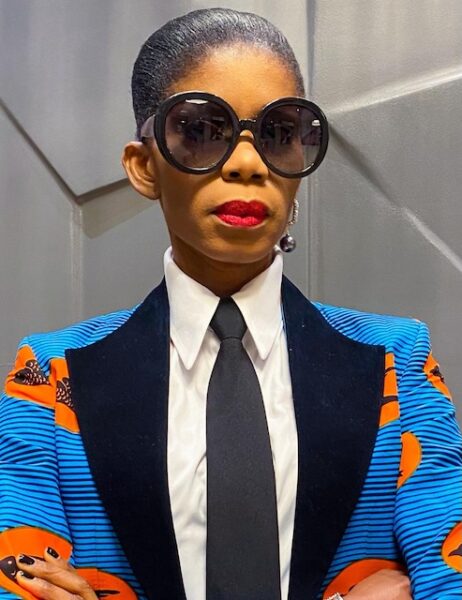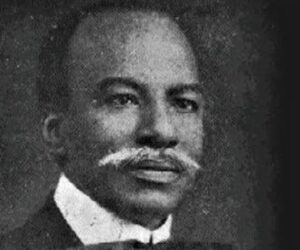
Temi Otedola didn’t snub Nigerian designers; she expanded the runway… She proved that any designer with the vision, skill, and storytelling craft — regardless of origin — can be called to interpret any culture. In doing so, she quietly dismantled the illusion that cultural identity alone guarantees relevance.
When the wedding images of Temi Otedola (now Temi Ajibade) surfaced online — resplendent in traditional Nigerian outfits crafted by mostly non-Nigerian designers, including celebrated American couturier, Zac Posen — they quickly stirred mixed reactions across social media. “Temi Otedola & Mr Eazi should have done their wedding in Nigeria to support Naija brands. Doesn’t make sense carrying that money to foreigners,” one influencer posted on X (formerly Twitter).
And to be fair, it’s easy to see where that view is coming from.
Temi is not just any bride. She’s a high-profile Nigerian elite, a member of one of the country’s most influential families, and someone whose choices are always under a cultural and political microscope. For some, her decision to outsource the design of deeply traditional Yoruba garments to foreign designers felt symbolic — a redirection of resources and prestige away from Nigerian creatives at a time when the local industry is fighting for recognition, patronage, and sustainability.
To these observers, this wasn’t just a fashion choice. A Nigerian woman of wealth and influence taking money and visibility, perhaps even cultural authority, abroad. And in a country where the elite frequently crossover into government or public influence, that symbolism hits deeper.
So yes, I understand the disappointment. But here’s what I also see: Temi’s choice wasn’t just about fashion; it was a wake-up call. And not to her critics, but to Nigerian designers themselves.
Beneath the criticism lies an assumption that only Nigerians can or should design traditional Nigerian clothing. But this moment disrupts that notion. Zac Posen, though not Nigerian by heritage, created a look that paid homage to Yoruba culture, while exuding the polish of a global luxury label. In doing so, Temi demonstrated that cultural design is no longer the exclusive domain of cultural insiders. If an outsider can interpret Nigerian tradition with elegance and respect, then our fashion has become part of a wider, global conversation. And that’s not a threat; it’s an opportunity.
What the Zac Posen moment really revealed is a sense of creative complacency within parts of Nigeria’s fashion industry. Many designers have thrived as local champions in traditional wear, but Nigerian designers can no longer rely on cultural fluency alone. If it isn’t matched with global branding, innovative storytelling, tailoring precision, and reach, it will fall short. Irreplaceability is no longer guaranteed.
Temi’s move is a signal: the bar has shifted. For a generation shaped by Instagram, Afrobeats, and Netflix’s global Nollywood, origin matters less than creative capacity. If Temi could commission a foreign designer to interpret Yoruba heritage, what’s stopping an Indian billionaire from asking a Nigerian designer to reimagine the sari? What’s stopping a Brazilian client from requesting a Nigerian take on carnival couture?
We are in a moment of cultural cross-pollination, and the doors are swinging both ways. Now, Nigerian designers can position themselves not just as local custodians of tradition, but as interpreters of global culture. You shouldn’t only master iro and buba, kaftans, or boubou. You should be able to infuse the Nigerian spirit into a kimono, lehenga, hanbok, or even a Scottish kilt, because fashion isn’t just about fabric. It’s also about perspective.
The designers who win on the world stage are those who can see beyond borders, who can take a thread from Lagos and weave it into a silhouette in Tokyo, Paris, or Rio.
What the Zac Posen moment really revealed is a sense of creative complacency within parts of Nigeria’s fashion industry. Many designers have thrived as local champions in traditional wear, but Nigerian designers can no longer rely on cultural fluency alone. If it isn’t matched with global branding, innovative storytelling, tailoring precision, and reach, it will fall short. Irreplaceability is no longer guaranteed.
It’s not enough to say, “I know how to make agbada.” The real question is: Can you make the world want to wear your agbada? Can you reinterpret someone else’s heritage with the same originality and care you bring to your own?
It’s not that Nigerian designers are not needed. It’s that they are no longer immune to competition beyond their borders. That immunity was built on cultural monopoly. That monopoly is now broken.
In today’s fashion landscape, cultural expression is fluid, collaborative, and borderless. Designers across the world are blending traditions, co-creating new silhouettes, and redefining identity through style.
So instead of asking, “Why Zac Posen or Oscar de la Renta?” We should be asking: “Which Nigerian designer is ready to be the Zac Posen of another culture?” That’s the real question.
Temi Otedola didn’t snub Nigerian designers; she expanded the runway.
She proved that any designer with the vision, skill, and storytelling craft — regardless of origin — can be called to interpret any culture. In doing so, she quietly dismantled the illusion that cultural identity alone guarantees relevance.
It’s not that Nigerian designers are not needed. It’s that they are no longer immune to competition beyond their borders. That immunity was built on cultural monopoly. That monopoly is now broken.
Tessy Oliseh-Amaize is an award-winning Nigerian designer and creative director of Tesslo.












